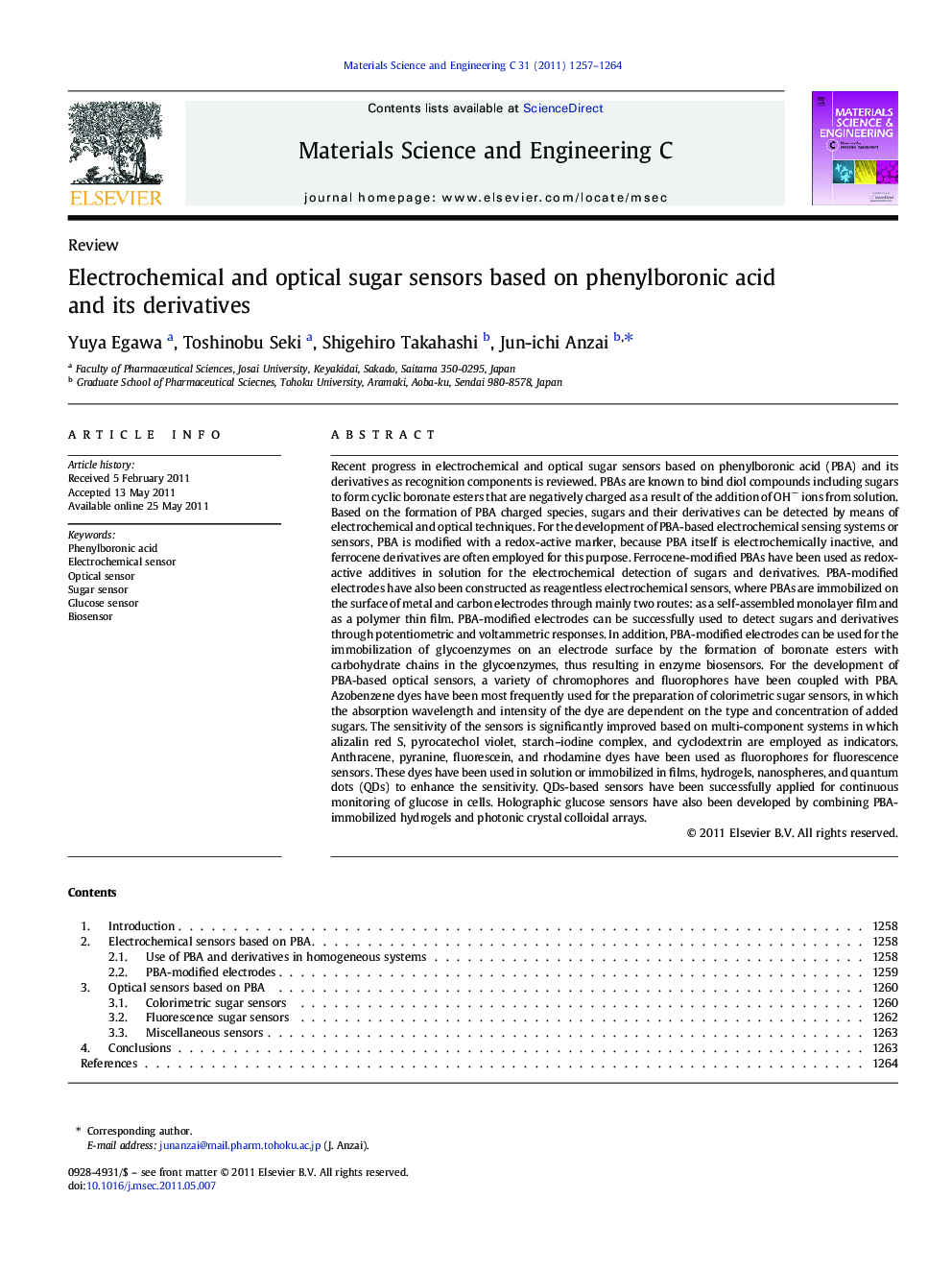| کد مقاله | کد نشریه | سال انتشار | مقاله انگلیسی | نسخه تمام متن |
|---|---|---|---|---|
| 1429705 | 987180 | 2011 | 8 صفحه PDF | دانلود رایگان |

Recent progress in electrochemical and optical sugar sensors based on phenylboronic acid (PBA) and its derivatives as recognition components is reviewed. PBAs are known to bind diol compounds including sugars to form cyclic boronate esters that are negatively charged as a result of the addition of OH− ions from solution. Based on the formation of PBA charged species, sugars and their derivatives can be detected by means of electrochemical and optical techniques. For the development of PBA-based electrochemical sensing systems or sensors, PBA is modified with a redox-active marker, because PBA itself is electrochemically inactive, and ferrocene derivatives are often employed for this purpose. Ferrocene-modified PBAs have been used as redox-active additives in solution for the electrochemical detection of sugars and derivatives. PBA-modified electrodes have also been constructed as reagentless electrochemical sensors, where PBAs are immobilized on the surface of metal and carbon electrodes through mainly two routes: as a self-assembled monolayer film and as a polymer thin film. PBA-modified electrodes can be successfully used to detect sugars and derivatives through potentiometric and voltammetric responses. In addition, PBA-modified electrodes can be used for the immobilization of glycoenzymes on an electrode surface by the formation of boronate esters with carbohydrate chains in the glycoenzymes, thus resulting in enzyme biosensors. For the development of PBA-based optical sensors, a variety of chromophores and fluorophores have been coupled with PBA. Azobenzene dyes have been most frequently used for the preparation of colorimetric sugar sensors, in which the absorption wavelength and intensity of the dye are dependent on the type and concentration of added sugars. The sensitivity of the sensors is significantly improved based on multi-component systems in which alizalin red S, pyrocatechol violet, starch–iodine complex, and cyclodextrin are employed as indicators. Anthracene, pyranine, fluorescein, and rhodamine dyes have been used as fluorophores for fluorescence sensors. These dyes have been used in solution or immobilized in films, hydrogels, nanospheres, and quantum dots (QDs) to enhance the sensitivity. QDs-based sensors have been successfully applied for continuous monitoring of glucose in cells. Holographic glucose sensors have also been developed by combining PBA-immobilized hydrogels and photonic crystal colloidal arrays.
Figure optionsDownload as PowerPoint slideHighlights
► Phenylboronic acid-based optical and electrochemical sensors are reviewed.
► Dye-modified phenylboronic acids are useful as optical sugar sensor.
► Ferrocene-modified phenylboronic acids are used for electrochemical sugar detection.
► Phenylboronic acid is an alternative of enzymes for constructing sugar sensors.
Journal: Materials Science and Engineering: C - Volume 31, Issue 7, 10 October 2011, Pages 1257–1264